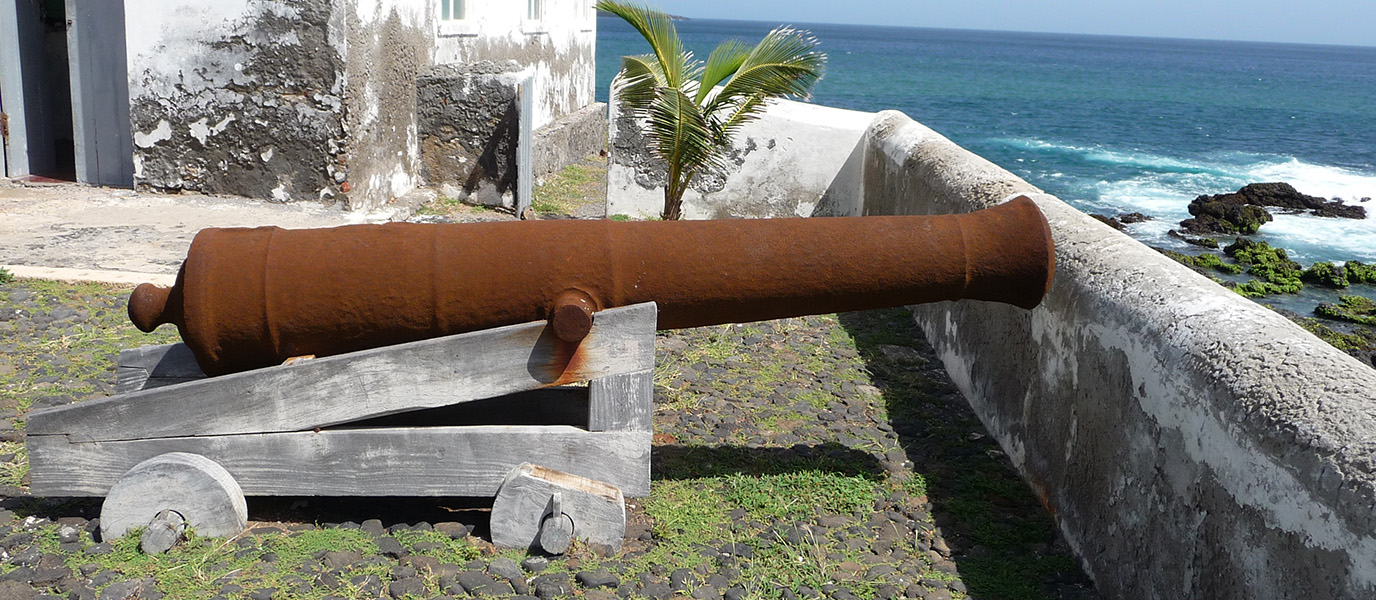Praia is possibly the largest cultural and artistic centre on the island of Santiago. It is for this reason, and due to the fact that it is the capital of Cape Verde, that most of the country’s museums are located here. Those that hold the most important treasures representing the history and art of the archipelago are without a doubt the Archaeological Museum, the Ethnographic Museum and the Amílcar Cabral Museum, which is dedicated to one of the great leaders of Cape Verde’s independence. These are the most important cultural spaces in Praia, but interesting art can also be seen in private galleries that hold temporary exhibitions featuring the work of interesting painters. Art has even arrived in the city in the form of urban or street art. Just stroll the historical quarter and see it for yourself at Achada Grande Frente, an open-air gallery that showcases the great creativity of local (and foreign) artists.
- Amílcar Cabral Museum
- Ethnographic Museum of Praia
- Praia Archaeology Museum
- Art galleries
- Art in the streets
Amílcar Cabral Museum
Dedicated to one of the most important leaders in the struggle for the independence of Cape Verde and Guinea Bissau, the Amílcar Cabral Foundation is a cultural institution of remarkable historical importance where exhibitions related to the history and culture of Cape Verde are regularly held. Founder of the African Party for the Independence of Guinea and Cape Verde (PAIGC), Amílcar Cabral led the movement that sought liberation from the ‘yoke’ of the Portuguese. And although he did not manage to see the culmination of his struggle, his legacy lives on in the foundation. Numerous documents, photographs and personal objects belonging to Cabral can be seen here, tracing his personal life and political career. A must-visit destination to help you understand the recent history of Cape Verde and the importance of Amílcar Cabral.
Ethnographic Museum of Praia
Situated in the heart of Praia, the Ethnographic Museum is not particularly large, but it makes for an interesting visit due to its important collections. Opened in 1997 to house all the artistic heritage that was plundered and collected by the National Institute of Culture (INAC) on some of the archipelago’s islands between 1992 and 1995. On the islands of Santiago, San Antonio, Boavista and Brava, Capeverdean cloths and textiles and the famous, historical pánu di téra were found, along with cangalhas de madeira, a type of wooden saddlebag used for transportation, and pieces of ceramics, pottery, basketry, kitchen utensils, smoking pipes, leather bags, saddles, traditional jewellery, religious objects, musical instruments, etc. In short, the objects that were once part of daily life in Cape Verde. In other words, they are pieces of the history and soul of the archipelago.
Praia Archaeology Museum
Opened in 2008, the Praia Archaeology Museum is an important witness to the history of Cape Verde. Here there is a large space dedicated to the shipwrecks of the seventeenth and eighteenth centuries that sunk in the waters of the archipelago, with a large number of objects plundered from the ships, which were recovered by the Government of Cape Verde. This is the case, for example, of the ships San Francisco (1650), Princess Louisa (1743) and Lady Burgess (1806). Coins, candelabra, clocks, sextants and ceramics, among others, were found on them. You can also see a display cabinet with pieces of gold and brass foil that were recovered. Be sure to stop in front of a piece of ivory and a unique Swedish coin.
Art galleries
Art and culture in Praia shows never ceases to grow. In recent years, several art galleries have opened that are well worth visiting. One of the most famous is the Casa Museu Galeria Atelier Nelson Lobo, which was the first private art gallery in Praia. Here, the artist after whom the gallery is named, exhibits shows dedicated to interesting artists from all over the world.
Art in the streets
The best way to discover street art in Praia is to head to Achada Grande Frente, an emerging centre for street artists, where walls are used as canvases for murals and graffiti. Both local and international artists express themselves here, bringing a good dose of colour to the area. Urban art festivals are regularly held in the city.
And if you are interested in street art, don’t forget that in the vicinity of Praia, just 20 kilometres from the capital, is Porto Mosquito, a small town where the oceanographer Costeau is the inspiration for the art. Some of its houses bear paintings depicting sharks, dolphins and all kinds of sea animals. The paintings were intended to convey a message related to sustainability and the depths of the ocean. The first work was completed in 2018 and since then the paintings on the façades of this small town have multiplied, making it a popular tourist attraction. It should be noted that Costeau spent a long spell in Cape Verde in order to test out a small submarine.



























































